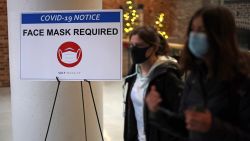Telemedicine has been around for more than two decades, but its adoption among Americans has been relatively low. The coronavirus pandemic is quickly changing that.
With millions of people around the country forced to stay home in lockdown and worried about potentially exposing themselves to the virus, many of them are turning to telemedicine companies’ virtual consultation services. According to the US Centers for Disease Control and Prevention, most people that contract the coronavirus only suffer mild illness and can recover without leaving their homes. Telemedicine companies are stepping in to give patients a chance to talk through their symptoms and decide if they need to be hospitalized.
CareClix, a virtual health platform based in Alexandria, VA, has more than 20 million users across the US and says it saw a 50% increase in usage in March. Zipnosis, another telemedicine company based in Minneapolis, reported a 3,600% increase in virtual visits on its platform over an 11-day period last month.
“Unfortunately, it’s taken some pretty extraordinary circumstances, but I think this will be a watershed moment for the industry,” Zipnosis CEO Jon Pearce told CNN Business. “Certainly in the past few weeks with Covid, I think people’s desire to have trusted advice from medical providers is just gone through the roof … and that’s what we can facilitate in a very fast fashion. And more importantly, we can facilitate that without leaving your home.”
Both companies have different approaches to telemedicine.
CareClix, founded in 2012, connects patients to doctors through an on-demand video platform that attempts to recreate the in-person experience in a virtual setting — similar to chatting with your doctor on FaceTime.
“We really try to mimic what’s done in brick and mortar,” said CareClix co-founder and CEO John Korangy. “From the user’s perspective for the patient and… the doctor, they’re not doing anything different than they would if you came and saw me face to face. The only thing different is now we have a monitor in between us.”
While CareClix’s technology is used by hospital networks and healthcare providers around the US, the company also has an internal team of doctors that can provide remote services to patients.
Zipnosis, on the other hand, operates in what is known as asynchronous care — where the doctor and patient don’t need to be in the same place (even virtually) at the same time. The company, founded over a decade ago, has users fill out a virtual questionnaire through a chatbot-like tool that packages their responses for a doctor to review and diagnose. Zipnosis claims this can dramatically speed up the process, allowing doctors to make a diagnosis in an average of 89 seconds.
“Instead of talking to a doctor over video, you would answer a series of yes [or] no questions,” Pearce said, “the same questions they would be asking you in real life when instead of doing that, we have a really smart computer system do it.”
Telemedicine has its limitations — some complex diagnoses and treatment may require in-person interactions. If a patient appears particularly sick, telemedicine companies will recommend they go to a clinic or hospital. But the technology can play an important role in easing some of the initial load from walk-ins, particularly as the global pandemic places strain on the healthcare system and makes people nervous about being exposed to the virus.
“What’s happening is that people are worried,” said Ann Mond Johnson, CEO of the American Telemedicine Association, a non-profit organization focused on increasing the adoption of virtual health technologies. “People don’t know really what to do, where to go, whether or not they should get a test for the virus. And so the hospitals are really deeply concerned about managing exposure.”
CareClix has begun offering free Covid-19 evaluations to its users, while over 40% of health care providers that use Zipnosis’s technology are also offering free screenings.
Johnson says telemedicine as a concept has been around for more than 25 years, but its adoption by both patients and doctors was relatively slow until the crisis. And there are still psychological barriers that need to be broken through.
“In point of fact, you all know that you’ve interacted with a physician or a clinician and have had them provide a lot of services to you without ever laying hands on you,” she said. “So part of it is overcoming this myth that somehow it’s second class medicine.”
But the extraordinary circumstances created by the coronavirus appear to be leading to a breakout moment that telemedicine companies hope will sustain even after the crisis passes.
“It’s been a desire of the industry for a long time where we stopped talking about telemedicine or virtual care and it just becomes healthcare,” said Pearce. “And I think this will be the catalyst for that.”























